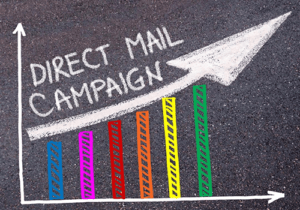
Marketers are facing increasing pressure from various sources to ensure the success of their campaigns. Decision-makers are scrutinizing every channel to determine its effectiveness, including social media, email, offline channels, and, of course, direct mail. Marketing in today’s world, characterized by pandemics, political upheaval, and unprecedented weather events, has become more complex and requires meticulous management to evaluate every aspect of a campaign’s impact on customers.
According to data from Magna, companies invested $15.9 billion in direct mail campaigns in 2020, highlighting its continued importance as a channel for reaching customers. While the focus often revolves around the core attributes of a mailing program—such as the offer, creativity, and the database—marketers should also consider other elements that can significantly contribute to a higher return on investment (ROI). These overlooked aspects can play a pivotal role in driving a more favorable response to their campaigns.
Which Day Generates a Higher Response?
Picking the best day to mail is more important than you think. So, targeting your delivery to a three-day window where you may generate a higher response is 100% possible. I’ve seen as much as a 20% difference in response rates based on the day of delivery.
What’s Your Cadence And Is It Working?
We know consumers don’t buy the first time they receive a piece of mail. It takes multiple touches for consumers to purchase, usually through several channels. Most merchants mail the same person multiple offers in a cadence. Marketers should monitor the execution of this cadence to ensure consumers are getting the communications in the proper order.
Are You Optimized for Postage And Delivery Time?
There are methods that merchants use to optimize their campaigns and ensure their mail is delivered when they need it to and keep on budget. It is a challenge, but good marketers know that optimizing these two factors gets the best results. Yes, there are times when higher postage can get the mail piece in the customer’s hands at the right time to gain the highest response.
Are You Focused on Mail Date or “In-Home”?
If you are focused on a mail date, you shouldn’t be. In-home dates are what the savviest of marketers use now. Once you know when your customers respond the best, target your mailings to hit those desired in-home dates.
Are Vendors Meeting Delivery Deadlines?
When you’re mailing using multiple lettershops, are you monitoring and comparing their delivery time? You need to trust the one launching your campaigns. Having a system in place is essential to ensure they’re meeting their obligations.
What’s Your Address Hygiene Strategy?
Do you know where your prospect lists are from? Are they built in-house, from a partner, or grown organically? No matter what the origin, keeping that data fresh is critical. For direct mail, are you using CASS and NCOA at the time of production? Do you use Address Change Services (ACS)? You should be.
Are You Using Informed Delivery?
Informed Delivery is an offering from the USPS that lets subscribers know when an offer is in their mailbox, so a mail piece is directly transformed into a digital tactical moment in the receiver’s inbox.
Are You Using Direct Mail for Retargeting?
Physical mail in the digital age continues to merge both channels in unique ways. Advanced Addressable Direct Mail (AADM) is a relatively new concept that allows direct mail to be activated when a visitor (if you have their address) hits your website. This service is expected to be a $150m industry in the next few years.
Every campaign may not require each of these actions, but once you start mixing them into your efforts, you will gain valuable visibility into every aspect of your mailing.
Josh McCaully is Head of Data at GrayHair Software 
